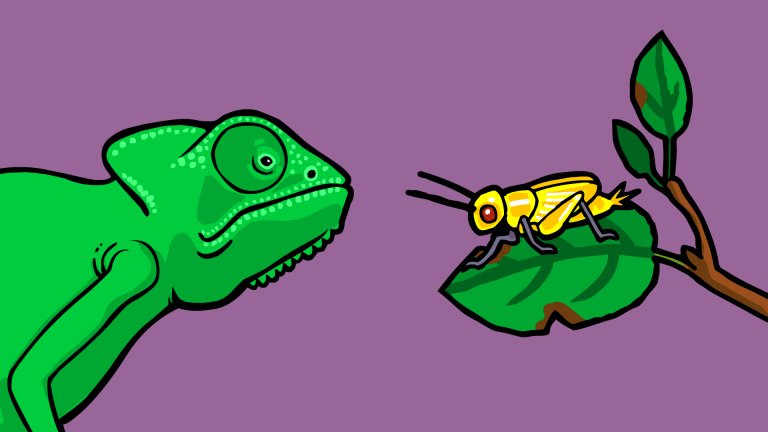Overview
Most of us are used to the idea of vertical gene transfer: the passing down of genes vertically from parent to child. Hopefully, that’s all pretty straightforward. Horizontal gene transfer, sometimes called lateral gene transfer or sideways gene transfer, is exactly what it sounds like: the passing of one or more genes through routes other than parent-to-offspring.
Horizontal gene transfer is fairly common in bacteria. Some types of bacteria do this by actively attaching to and then sharing genes with other bacteria around them, even completely different species. Some bacteria can collect genes that have leaked out from other cells, use them as their own, and if all goes well, pass the foreign genes on to the next generation when they reproduce. Because of this, once a gene for antibiotic resistance evolves in one species, it can quickly spread to others, which causes huge problems for us when trying to control diseases.
Scientists now know that horizontal gene transfer can happen in multi-celled plants, fungi, and animals as well. It appears to be rare but has interesting implications for the study of evolution.
Explore Further
Lessons from Wikipedia on gene transfer in bacteria:
Scientific papers on horizontal gene transfer allowing antibiotic resistance to spread between species:
- Horizontal transfer of antibiotic resistance genes in clinical environments.
- Horizontal Gene Transfer and Acquired Antibiotic Resistance in Salmonella enterica Serovar Heidelberg following In Vitro Incubation in Broiler Ceca
- Horizontal Transfer of Antibiotic Resistance Genes on Abiotic Touch Surfaces: Implications for Public Health
- Acquisition and transfer of antibiotic resistance genes in association with conjugative plasmid or class 1 integrons of Acinetobacter baumannii
Scientific Papers on horizontal gene transfer in animals, including people:
Contributors
Our videos benefit from guidance and advice provided by experts in science and education. This animation is the result of collaboration between the following scientists, educators, and our team of creatives.
Advisors
- Joanna Masel, PhD
- PZ Myers, PhD
Team
- Jon Perry
- Anthony Danzl
Transcript
Most of us are used to the idea of vertical gene transfer, that is the passing down of genes, vertically from parent to child. Hopefully that’s all pretty straight forward.
Horizontal gene transfer, sometimes called lateral gene transfer or sideways gene transfer, is exactly what it sounds like:
Horizontal gene transfer:
The passing of one or more genes through routes other than parent-to-offspring
Horizontal gene transfer is fairly common in bacteria. Some types of bacteria do this by actively attaching to and then sharing genes with other bacteria around them, even completely different species. Some bacteria can collect genes that have leaked out from other cells, use them as their own, and if all goes well, pass the foreign genes on to the next generation when they reproduce. Because of this, once a gene for antibiotic resistance evolves in one species, it can quickly spread to others which causes huge problems for us when trying to control diseases.
Horizontal gene transfer is common in bacteria but for most plants and animals, complete horizontal gene transfer appears to be very rare.
With a few exceptions, every cell in your body contains its own full copy of your genes – your entire genome. The same is true for other multi-celled animals and plants. Because of this everyone is constantly spilling genes when cells die or are damaged.
As you bump around through life along with other organisms – your pets, random bugs, bacteria, plants and so on – it’s fairly likely that at some point, genes spilt from someone else’s damaged cells, will make it inside one or more of your cells.
In most cases this is not a big deal – you have special enzymes that usually destroy invading genes on entry, but recent studies suggest that in rare cases, foreign genes can physically fuse with your cell’s DNA. At this point, your cell behaves as though the foreign genes are its own genes. It can start reading them and using them to make proteins. Certain types of viruses reproduce by forcing this to happen. They actively insert their genes into the genomes of their victim’s cells.
Scientists now know that interspecies gene swapping happens all the time but, from an evolutionary perspective, it doesn’t matter if one skin cell or one eyeball cell takes up a foreign gene. It only counts as complete “horizontal gene transfer” If a foreign gene ends up making it into a reproductive cell – sperm or egg in animals, or a gamete inside a pollen grain or ovule in plants, and then one of those reproductive cells actually goes on to make a child. That child now contains the foreign gene in every cell of its body and can pass it to its own offspring if it one day succeeds in having children of its own.
Complete horizontal gene transfers in plants and animals appear to be rare, but when they do happen, they allow genes to hop from one species to another, from one closed gene pool to another. This, along with normal mutations, gives Natural Selection brand new toys to play with. It’s currently unclear how important horizontal gene transfer has been in the evolution of our species – here are two papers on the topic that completely contradict each other – but we do know that horizontal gene transfers happen naturally, even in humans.
I’m Jon Perry and that is Horizontal gene transfer – is the passing of one or more genes through routes other than parent-to-offspring – Stated Clearly.




